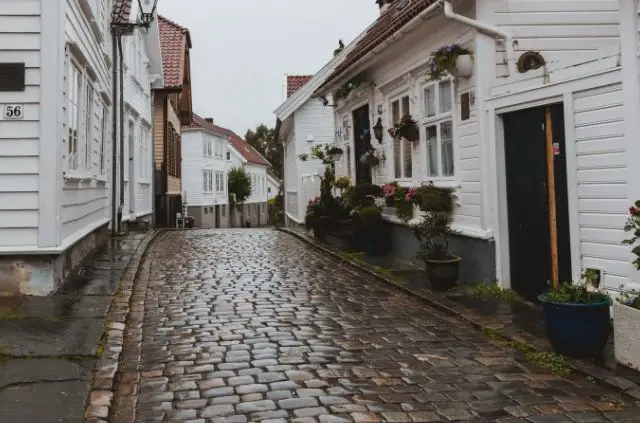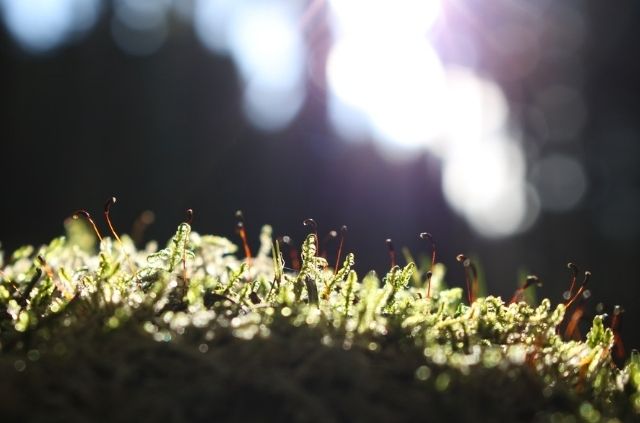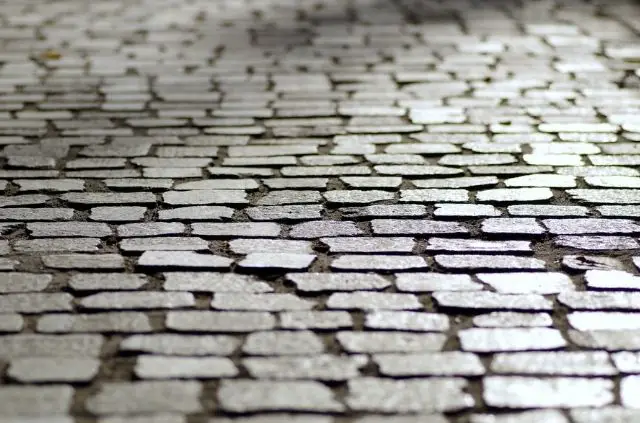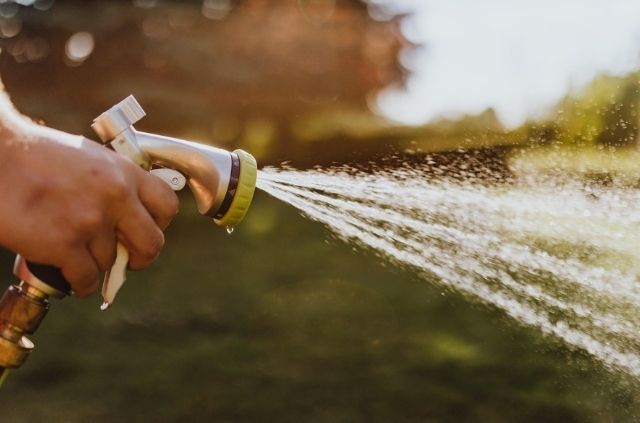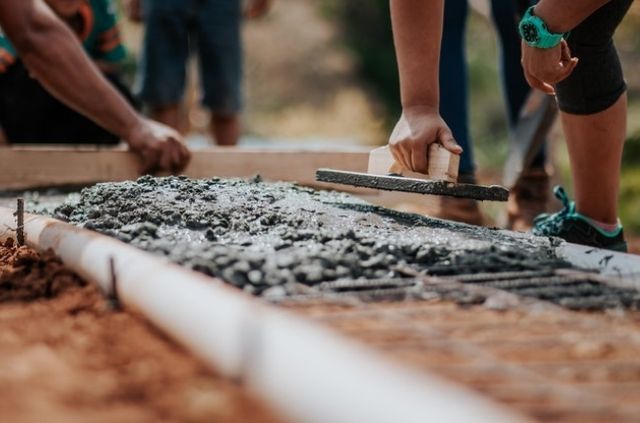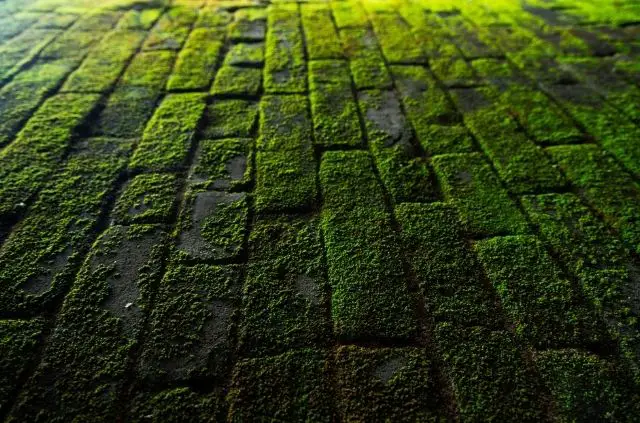Do Pavers Fade Over Time in the Sun?
Keeping the outside area around your house in good condition will enhance the exterior and increase the resale value. Installing pavers to build a patio is one way to make this happen. But like many other materials, concrete pavers will require maintenance to keep them looking new. But do pavers fade over time?
Pavers will fade over time from the sun, mold, and mildew. The good news is that you can slow down and even prevent this from occurring with regular maintenance. The pavers should be cleaned on a regular basis and you should apply a high quality sealant to protect the surface from fading.
Benefits of Pavers
There are many benefits of installing pavers around the outside of your home. For one they will look much better compared to a traditional concrete walkway or patio. Concrete is also known to crack with age as the ground naturally shifts and expands.
You won’t have this problem with pavers, because the blocks are too small. Installing pavers is also a cost effective way to spruce up the exterior of your house. Pavers come in many different shapes, sizes and colors, so you can customize the outdoor living area to fit your personal preferences.
If you want to save money on labor costs, pavers can also help. These blocks can be installed in a few simple steps, which makes it a perfect project for the average weekend warrior.
How to Stop Pavers from Fading
There are two main ways to prevent pavers from fading over time. Keeping up with routine maintenance and making sure that there is always a layer of sealant on the surface. These two methods will protect your outdoor living area and guarantee that the surface of the pavers will last for a long time.
Applying a Sealant
One of the best ways to stop pavers from fading over time is to apply a sealant. A sealant acts like a barrier between the surface of the block and the harsh elements from nature.
This protective layer will make it easier to clean off dirt and prevent the pavers from chipping due to regular wear and tear from walking on them. What actually keeps pavers from fading in the sun is the ability to block harmful UV rays.
Solvent or water based paver sealers offer the most amount of ultraviolet protection and they will help maintain the original color. You can either apply paver sealant with a garden pump spray bottle, or by using a roller and tray combination.
Regular Maintenance
Pavers not only fade from long term exposure to the sun, but they can also become discolored from organic growth. Mold, mildew, and dirt will inevitably end up on the surface of your patio.
If left ignored, mold will spread and completely transform the look of your pavers. You need to remove this organic growth in order to maintain the color. All of these contaminants needs to be removed on a regular basis. That’s why it’s so important to get on a routine cleaning schedule.
You can either use a surface cleaner to wash pavers, or use a garden pump sprayer. Just be aware that a surface cleaner will create a high amount of pressure and can potentially remove the joint filler sand.
Paver Restoration Step-by-Step
If your pavers have been neglected for too long, you might need to follow the below paver restoration steps. This will clean your pavers and protect them for the future. Once the cleaning has been completed, you will need to apply a high quality sealer.
1. Remove Surface Dirt
Before washing the pavers it’s important to remove any surface dirt. This includes leaves, pine needs, and small twigs. The cleaning won’t be as effective if you have to work around these objects. You can even use a leaf blower to speed up this process. This will work better than picking things up by hand, or using a broom.
It’s also a good idea to prepare all of your gear during this time. You will need hoses, brushes, and a sealer. You don’t want to start any job, only to need more items later. If you are choosing to use soap for cleaning, make sure you have enough of it before starting. A multi-use soap will be the best option for general cleaning.
2. Wash the Pavers
As we briefly mentioned above, you have two options when it comes to cleaning the pavers. You can either use a surface cleaner, or pump sprayer. A surface cleaner gets attached to the end of a pressure washer and produces high amounts of water. It can be useful on neglected surfaces that have stubborn mold, mildew, and stains.
Your other option is to use a pump sprayer. This is far less aggressive and relies on a detergent in order to remove any contaminants on the surface. There are a variety of products that can help remove anything from oil stains to mold, so choose what you need for the job. Once the cleaning solution gets applied to the surface, allow some time for it to dwell.
3. Apply Joint Sand
If you cleaned the pavers using a surface cleaner, you will need to follow up with applying joint sand. Polymer sand is a material specifically made to keep pavers secure and prevent them from shifting. It’s also much more fine compared to regular sand. You can spread this sand down using a broom to sweep the material in between each block to fill in the gaps.
Even if you used a pump sprayer, it’s still a good idea to check how much joint sand is left in between the pavers. Sometimes this material can get packed down, especially if you’re working on an older patio. When you’re done there might be some sand left on the surface and you will need to remove with a broom and dustpan, or leaf blower.
4. Spray Down Sealer
Spraying down the sealer is the final step in restoring your pavers. They are designed to prevent contaminants like oil, grease, and mold from penetrating the surface of the pavers. The sealant can easily be applied with a handheld pump sprayer. This tool allows you to evenly spread out the product across the entire surface area.
Most sealers don’t require any water during the application process, but it’s still a good idea to check the label. You can use a flat board when it comes to the perimeter, in order to prevent overspray on other areas around your patio. Paver sealer will only take a couple of hours to dry, but you will need to wait a full 24 hours before walking on the surface.
Conclusion
This article began with a question: do pavers fade over time? You have learned that it’s natural for this type of exterior flooring material to fade from many different reasons. Exposure to sunlight, mold, mildew, and oil stains can get onto the paver surface and cause discoloration.
That’s why it’s so important to maintain your pavers on a regular basis. This includes getting on a regular cleaning schedule and sealing your pavers once a year. A high quality sealant will preserve your pavers and act like a shield between the block and anything that makes contact with the surface.
Further Reading
Search Terms
- Do pavers fade over time?
- How to prevent pavers from fading

